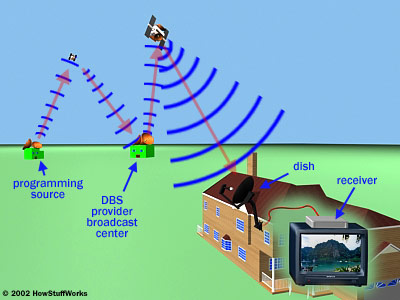Satellite TV System
The earlier viewers of the Satellite TV used the expensive dishes so that they can watch the unique and different program, which were not intended for mass audiences. They get the dish and receiving equipments, which are necessary tools to get the foreign stations, NASA activities and live feed between different broadcast stations and lot of other material and programming, which is being transmitted through the use satellites.
The owners of the satellite seek this sort of program and most of the customers of satellite TV get their programming through DBS provider including DirectTV of the DISH TV Network. The satellite providers select the programs and broadcast the programs as the subscriber of the set package. The main objective of the provider is to bring dozens or hundreds of channels on the TV and it can approximate the competition of the cable TV.
The broadcast of the provider is based on the complete digital and it means that it provides much better picture and sound quality. The companies introduced earlier satellite TV, which was broadcast the C-band radio in 3.7 GHz to 6.4 GHz frequency range. The digital broadcast satellite transmits the programming in Ku frequency range from 11.7 GHz to 14.5 GHz.
The Components
The customers should note the five big components of direct to home or direct broadcasting satellite system, which are satellite, receiver, satellite dish, programming source and the broadcast center.
- Programming sources provide the programming for broadcast and they work as channels. The provider does not need to create the original programming but it makes the payments to other companies including HBO or ESPN for the right to broadcast their contents with the use of satellite. The provider performs as broker between you and the actual programming sources like Cable TV companies work on the same principle.
- The broadcast center is the central part of the broadcasting system and it works as the TV provider in order to receive signals from various programming sources and beams a broadcast signal to satellites in geosynchronous orbit.
- The satellites get the signals from broadcast station and it rebroadcasts them to the Earth.
- The dish of the viewer picks up the signal from the satellite or with the use of multiple satellites in the same part of the sky and it passes to the receiver in the house of viewer.
- The receiver processes the signal and it passes to a standard TV.
The Wild Side
The earlier satellite viewers used C-band radio for their broadcast and they were able to catch the wild feeds of the sporting events, news and programs. These broadcasts are provided freely and the viewers will have to find them. They did not need to preview or list it for their regular broadcast programming. The signals are available and the satellite orbit magazine publishes the wild feeds of the today broadcasting.



